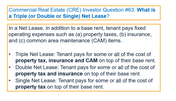
EQR Results; Expectations/Moods/Share Prices
Equity Residential (EQR) reported results last week showing improved quarter over quarter occupancy. While rents declined year over year, concessions/incentives have declined and rents have stabilized versus last quarter. LA, Boston, Orange Country and San Diego rank are expected to show relative strength for 2021. Of course, SF and NY have seen the largest declines in rents and occupancy though trends here are improving with reduced rental concessions (effective rents are leveling out). Overall management sounded optimistic about future trends.
For EQR, Net Operating Income declined 5% over the course of 2020 and 2021 guidance is for another 12-15% decline as lower lease rates work their way through the P&L. Thus the overall 2019-2021 peak-to-trough decline in NOI for EQR is expected to be 17-20%. While steeper than the decline I had initially anticipated (originally I’d been thinking 10% or so- original writeup here), it is very close to the NOI decline expected by market participants (including myself - find 3Q commentary here) following 3Q20’s results. The NOI decline will be steepest in 1Q21 (toughest comps as rents hadn’t declined in 1Q20) and is expected to strengthen throughout the year.
Recall that following 3Q results, EQR’s shares fell precipitously (hit a low of ~$44). Brokers were tripping over themselves to downgrade EQR and reduce price targets (basically saying sell the shares). While today’s NOI expectations are essentially in-line with those most analysts had in 3Q, over the past few months EQR’s (and many of the other apartment REITs) share price has surged 50% and brokers have upgraded the stock and set much higher price targets. Observations include:
1) Public markets can be volatile and are always searching for certainty. Other than the mood of the market, little has actually changed. In October, prior to the announcement of several effective vaccines, consensus seemed to be that a vaccine would be rolled out in mid 2021. ‘Vaccine news’ in November lead to a surge in share prices (+20-30% in a single day) even though the real news was simply that the vaccine would be perhaps 3 months ahead of schedule. It goes without saying that whatever incremental certainty was provided by a ~3 month head start did NOT add 20-30% to property cash flows or valuations.
2) The rating/price target of Brokers/sell-side firms merely follows share price action - as I’ve mentioned many times, with few exceptions brokers like to have price targets +/- 10% of the current price. Rather than being rational, brokers are inclined to rationalize -i.e. ‘here is why EQR should trade at $45-50 per share as residents flee cities and uncertainty looms large’ rather than ‘at $47 per share EQR sells a 40% discount to replacement cost and a mid 5s cap rate on TROUGH #s, there is simply no way to own these properties at these prices other than buying on the stock exchange’.
3) In contrast to the wildly fluctuating public market, while apartment transaction volumes were certainly down in 2-3Q20, transactions which did occur showed relatively limited declines in price (and deals being marketed showed limited declines in price/had strong buyer pools). There were $ billions worth of transactions in the LA/SF metropolitan areas showing little change in values (+/- 3% moves -here, here, here) versus pre-pandemic property prices during 3Q20. With private markets representing 95% of apartment ownership in the US (just 5% of apartments are owned by REITs), public market apartment REIT investors are best served by ignoring the sellside wizards but paying very close attention to the private market.
While price discovery was tougher in the harder hit urban core, the share prices of ALL apartment REITs with coastal exposure (even though much of it was suburban) were hit nearly as hard as EQR (EQR is the most urban of the apartment REITs but still has ~50% suburban exposure) despite private market transactions occurring at much higher prices. Some of the most opportunistic buys of apartment REITs were made by private market participants (fund managers, syndicators, investors, and brokers) who were actively buying apartment REIT shares in ‘the eye of the storm’ as they had real time knowledge and confidence that public share prices simply made no sense.
Other tidbits:
- UDR also reported results this past week. Trends for UDR were similar to ESS, EQR, AVB, etc. Recent transactions at UDR include the January sale of its 47% interest in Olive DTLA, a downtown LA property for $410k per unit. Being a downtown property in a hard hit city this transaction is notable. On the call, UDR noted that buyers of urban properties are looking through current difficult results and trading properties at values based on replacement cost (which continues to increase, i.e. construction cost inflation).
- Regarding transaction values EQR mgmt noted on the call that it believes valuations for the hardest hit markets (urban SF and NY) sit 10% below pre-pandemic levels (though mgmt went on to say that it expects a quick recovery in values here as the transaction market picks up). It noted that apartment valuations for several markets are flat to up including Denver, Seattle, Wash DC.
As always this is NOT INVESTMENT ADVICE. Do your own work.
Eric Bokota owns shares of EQR ESS AVB
Private Eye Capital Newsletter
Join the newsletter to receive FREE actionable investment ideas.





